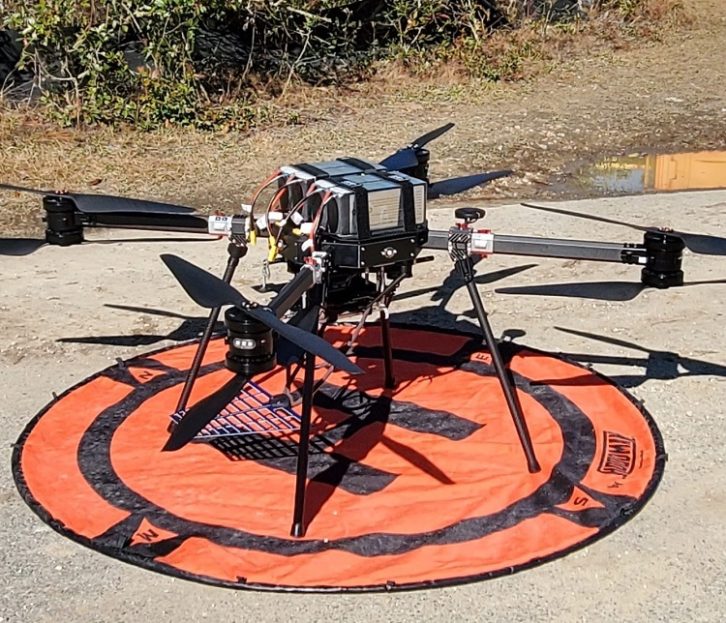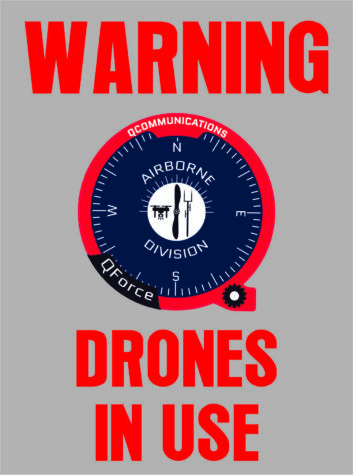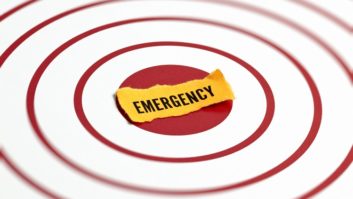
The author is QCommunications Vice President, Airborne Division — QForce.
Drones, “they ain’t just for kids anymore!”
Farmers are using them to measure crops, real estate developers are using them to survey land and medical professionals are even using them to deliver supplies to unreachable areas in disaster zones.
There’s no question about it, these unmanned aerial vehicles or UAVs make it easier to go where no human can or should go, and in the radio business that’s up a 400-foot or higher tower.
The Needless Climb
One drone = Hundreds fewer climbs. Drones bring with them a technology that allows engineers to ascertain and validate different types of structures, pattern signals and various equipment, all without human intervention other than the pilot on the ground.
Inspection by drone eliminates the “Needless Climb,” a phrase coined by QCommunications to describe an unnecessary and dangerous human journey up the side of an enormous tower to get a picture or investigate an irregularity.
Safety first

Without putting a climber on a tower, it’s now possible to confirm that a signal is reaching everybody it needs to reach — or not. The drone can perform different types of inspection services efficiently, accurately, safely and faster than a human without presenting a hazard, not only to the pilot, but to the customer or any else in the area.
Three of the most common and important inspections are:
- Pattern verification — confirm antenna functionality, installation, operation and coverage, and enable maintenance trouble shooting.
- Thermal line inspection — identify hot spots, burn outs, potential burnouts, blocking in system, or connection joint security.
- Structural inspection — directly related to the structure and all components surrounding it as part of the anchoring system. This inspection provides “points of interest” of any potential structural issues and potential failure points so the station engineers can make the best decision to ensure the structure’s safety. This service can also be used for the installation of any new equipment, can validate locations of new equipment and can indicate if a structure is rated to carry a new load.
Not only safe, but smart
Every drone flight reduces a tower climb, lessens risk to life and arms station engineers with information they need to make better, faster, more intelligent, actionable decisions.
With numerous drone service options for tower owners, station engineers and sales and marketing teams to choose from, the need of climbers outside of installation and hands-on maintenance is a thing of the past. Perhaps the greatest benefit of using drones is “tower surveys,” video inspections of a structure prior to any climbers arriving onsite. Climbers can use the imagery to ensure the structure is safe, thus minimizing injury of death.
The reports are also used as interactive engineering tools to mitigate customer viewership issues.
Historically, data was just used to prove FCC minimum requirements were met. Now it’s so much more than that. Drones identify damage, exactly where it is, and make it easier to fix so the signal is back quicker.
Safe and smart, good with money
Advertising only works if it reaches its audience. On the FM side, advertising is dependent upon how far it can go. If a signal is compromised, not reaching its target, advertising is not being delivered and revenues are not being fully generated.
Salespeople, therefore, have become enormous drone fans. The drone captures the data to provide an actual picture and model of the coverage, not a hypothetical. Salespeople are able to use the reports as sales tools to give advertisers factual, visible data about demographics making success more attainable, sales are increased, and stations can charge more money for advertising.
It’s all about the Base(line)
Have you ever asked yourself: Is my 50-year-old tower as sound structurally as it was 50 years ago? Am I getting all the signal strength I should from it, and do I even know what I should expect from it?
Well, the answer is probably not. There could be mistakes residing on the tower for 20, 30 or 40 years. There could be a bee’s hive, or a bird’s nest, or maybe someone painted over something that shouldn’t have been painted over and signal strength is being compromised, or gradually degrading.
Chances are … you don’t know because no one has been up there in decades, maybe the last time was when a light bulb needed to be replaced.
Send the drone up and take a baseline for everything. Whether the tower is five decades old, or it’s brand new, a baseline for your RF and structural effects will allow you to move forward confidently and evaluate solutions for problems down the road. You can explore, compare and determine what it takes to fix, and what makes sense to invest capital in, and what doesn’t.
In the past several years, numerous towers have fallen. A birds-eye inspection would have uncovered structural weaknesses that could have been repaired and a tower saved.
Once you’ve a baseline, how often should this be done? It depends on the initial find, the age of the equipment and if everything meets regulations.
In the beginning, we’d recommend every five years, but if something changes, or something happens such as a problem with your signal or you’ve been notified that you’re radiating too much out of the line, then send in the drones, because perhaps a seal is broken and you can’t see it, but a drone can and no one’s safety is put in jeopardy.
The Bottom Line
And here’s the section everyone has been waiting for!
First, reports of this magnitude that supported both engineering and sales didn’t exist until now. Secondly, cost and delivery — about half price of a traditional minimal report by human engineers would cost approximately $60,000 to $75,000 following a week and a half of data collection that would result in about 40 photos.
QCommunications fees are approximately $20,000 to $45,000 and include an interactive HD 4K video and interactive visual and planning tools. QComm also encourages engineers to witness the drone data collection process in real time and see their structure preliminary pattern start to generate on their screens for immediate results. A comprehensive report is then delivered within 10 days.







